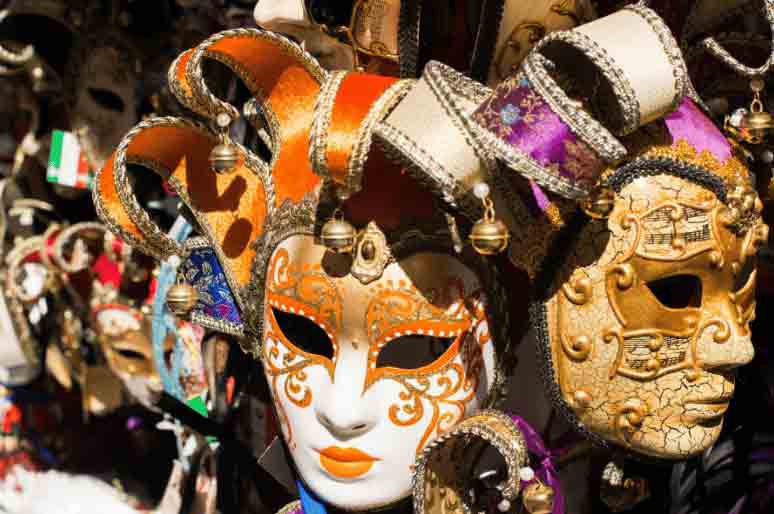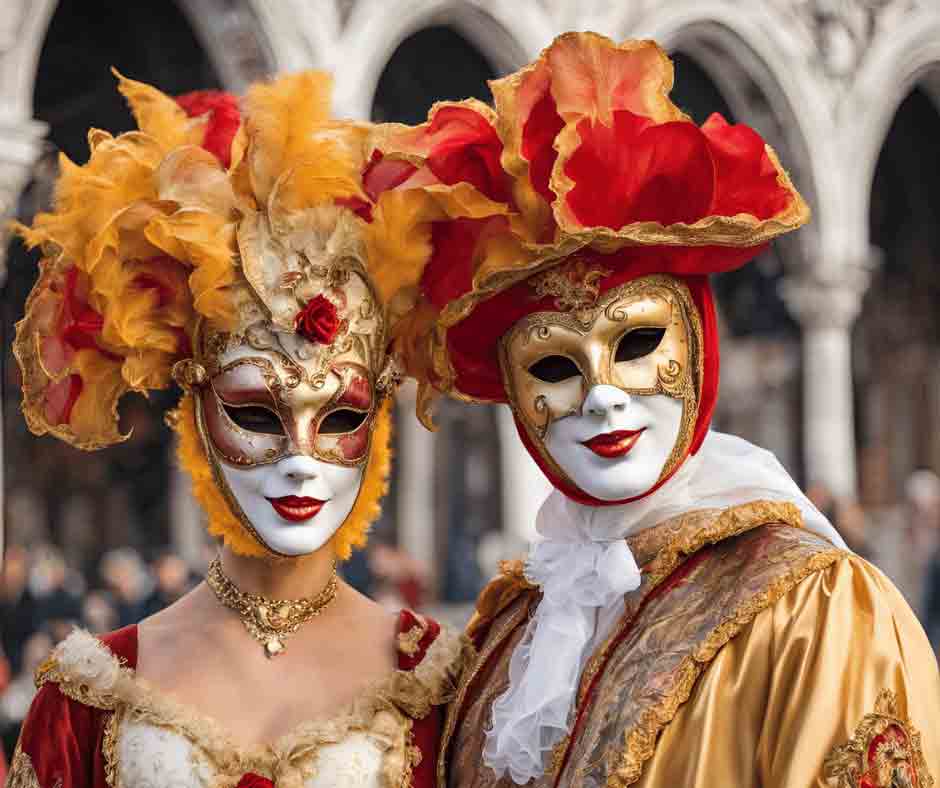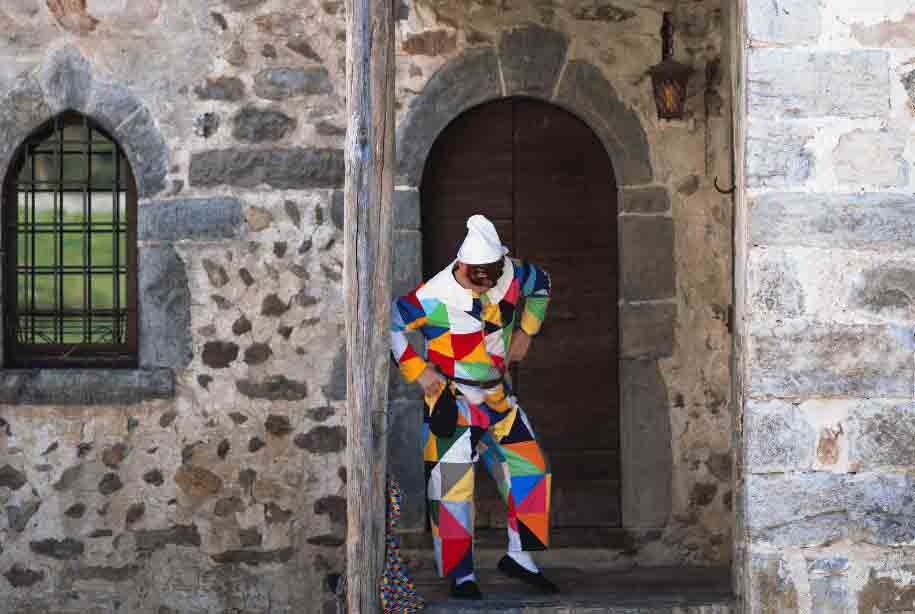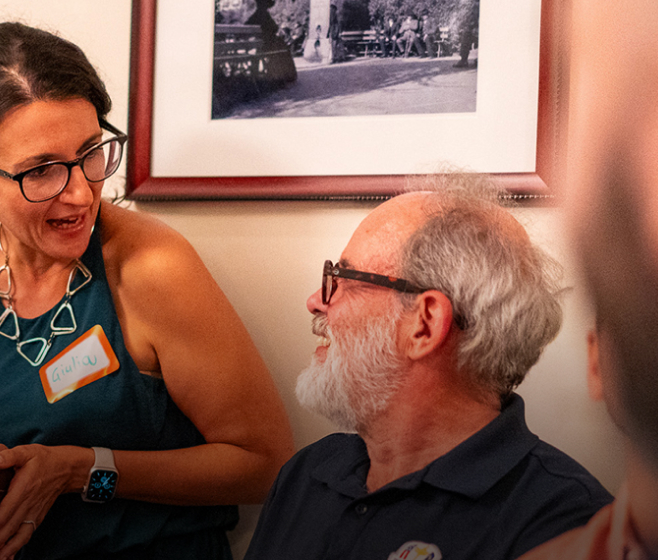
Carnevale in Italy: a celebration of masks, tradition, and festivity
and sweet indulgences of Carnevale
Carnevale, Italy’s vibrant pre-Lenten festival, is a time when the country bursts into a kaleidoscope of colors, masks, and joyous celebrations. Rooted in ancient traditions, Carnevale serves as a grand farewell to indulgences before the austerity of Lent.
Historical origins
The term Carnevale derives from the Latin “carnem levare,” meaning “to remove meat,” signifying the approach of Lent when meat and other pleasures were traditionally forgone. While its exact origins are debated, many believe Carnevale evolved from ancient Roman festivals like Saturnalia and Bacchanalia, which celebrated the arrival of spring with feasting and merrymaking. Over time, these pagan rituals were integrated into Christian traditions, leading to the Carnevale festivities we know today.
Iconic celebrations across Italy
Italy boasts numerous Carnevale celebrations, each with its unique customs and flair:
- Venice: Perhaps the most renowned, the Venetian Carnevale is famous for its elaborate masks and opulent costumes. Established in 1296, the festival allowed Venetians to conceal their identities, erasing social differences and encouraging uninhibited celebration. Today, the city’s piazzas and canals come alive with masked balls, parades, and theatrical performances.
- Viareggio: Located in Tuscany, Viareggio’s Carnevale is distinguished by its grand parades featuring massive papier-mâché floats that satirize political figures and celebrities. This tradition began in 1873 and has since evolved into a month-long celebration filled with music, dancing, and cultural events.
- Ivrea: In the Piedmont region, Ivrea hosts the famous “Battle of the Oranges”, a lively reenactment symbolizing the town’s rebellion against a tyrannical ruler. Participants divide into teams, engaging in a friendly yet spirited orange-throwing battle, commemorating the fight for freedom.

Traditional delicacies
No Carnevale celebration is complete without indulging in its rich culinary traditions. Each region offers its own sweet treats, often deep-fried and generously dusted with sugar:
- Chiacchiere: Known by various names across Italy—such as bugie, cenci, or frappe—these crispy fried pastries are thin strips of dough sprinkled with powdered sugar, providing a light and sweet crunch.
- Castagnole: Small, round fritters, often infused with lemon zest or liqueur, castagnole are soft on the inside with a delicate, sugary exterior.
- Frittelle: Particularly popular in Venice, these are sweet fried dough balls that can be plain or filled with cream, raisins, or pine nuts.

Masks: the symbol of Carnevale
Masks are perhaps the most iconic element of Carnevale, especially in Venice. Historically, they allowed wearers to hide their identities, promoting a sense of equality and freedom. Today, traditional masks like the Bauta (a full-face mask with a protruding chin) and the Colombina (a half-mask) are donned by participants, adding an air of mystery and elegance to the festivities.
One of the most famous masks in Carnevale tradition is Arlecchino (Harlequin), a colorful and mischievous character from the Commedia dell’Arte. Dressed in a diamond-patterned outfit, Arlecchino is a witty and playful figure, often outsmarting others with his cleverness and acrobatics.
His story is deeply intertwined with Italian theater and folklore, making him one of the most beloved figures of Carnevale.
At Istituto Italiano Scuola (IIS), we celebrate Carnevale’s rich traditions not only through language and culture but also through literature. We are excited to announce our upcoming Book Club, where we will explore the classic play “Arlecchino servitore di due padroni” by Carlo Goldoni. This masterpiece of Italian theater tells the hilarious tale of Arlecchino, a cunning and hungry servant who finds himself trying to serve two masters at the same time—with chaotic and comedic results. If you’re passionate about Italy’s traditions and literature, join us for this engaging discussion! Learn more and sign up here.

Carnevale’s cultural significance
Beyond the revelry, Carnevale holds deep cultural significance for Italians. It serves as a time to honor historical events, satirize societal norms, and strengthen community bonds. The festival’s rich tapestry of parades, performances, and culinary delights offers a window into Italy’s diverse regional traditions and shared love for celebration.
At Istituto Italiano Scuola (IIS), we cherish and promote Italian cultural traditions like Carnevale. Our programs delve into Italy’s history, language, and customs, providing students with immersive experiences that go beyond the classroom. Join us to explore and celebrate the vibrant heritage of Italy. Learn more at sfiis.org
that sparkle with joy at Carnival.”



